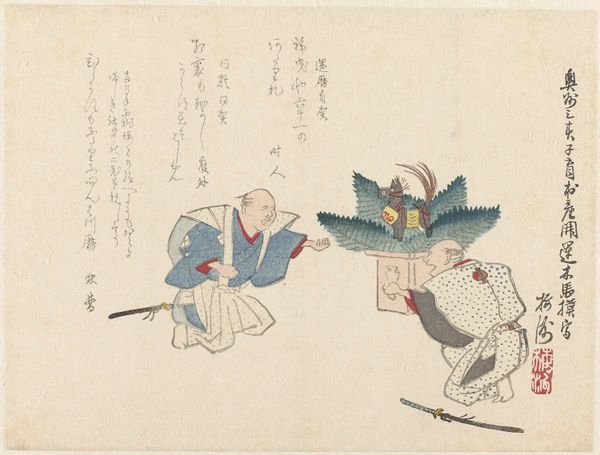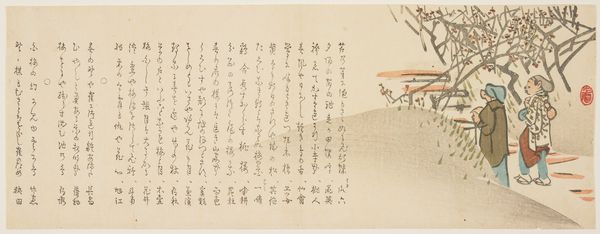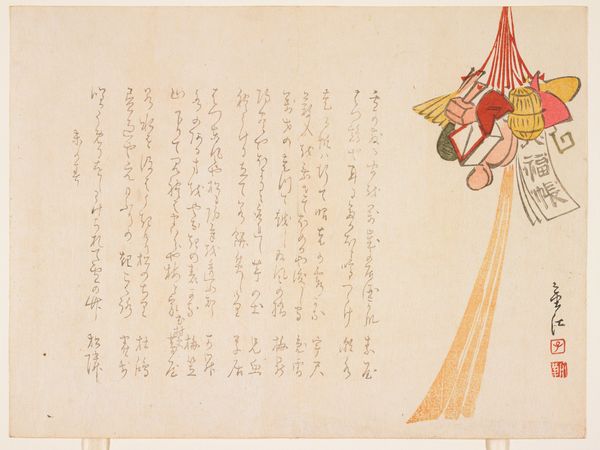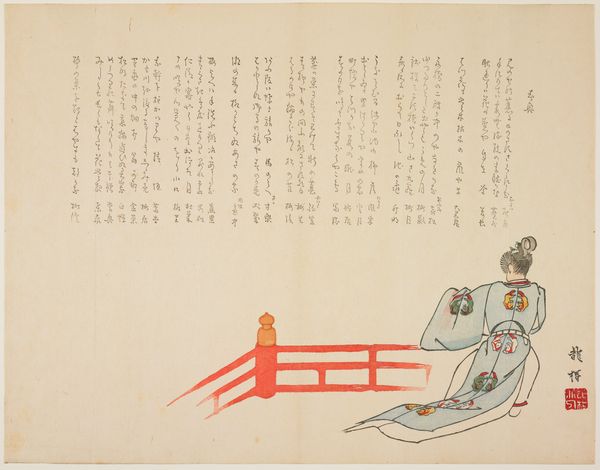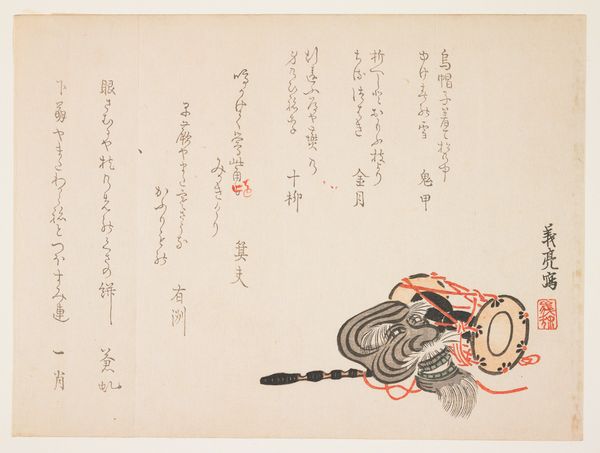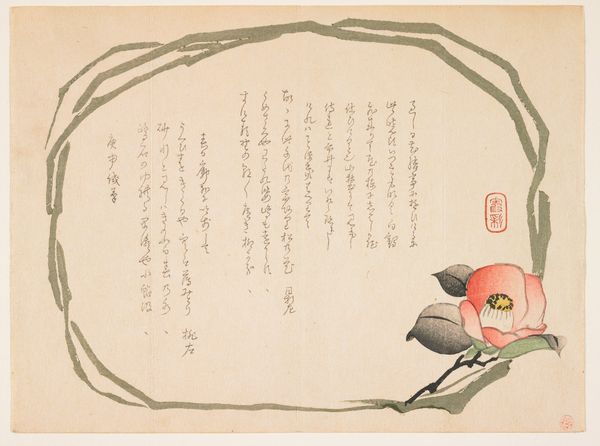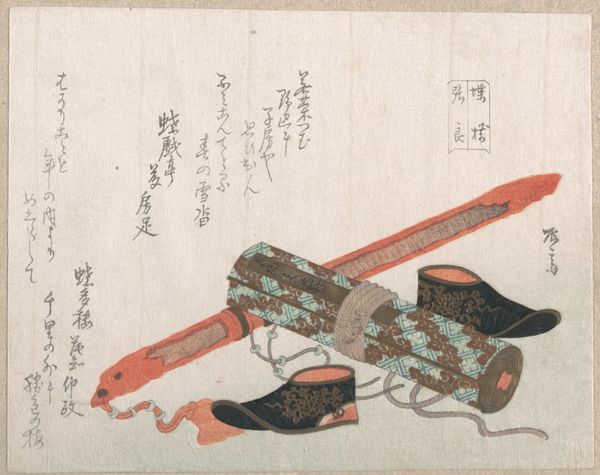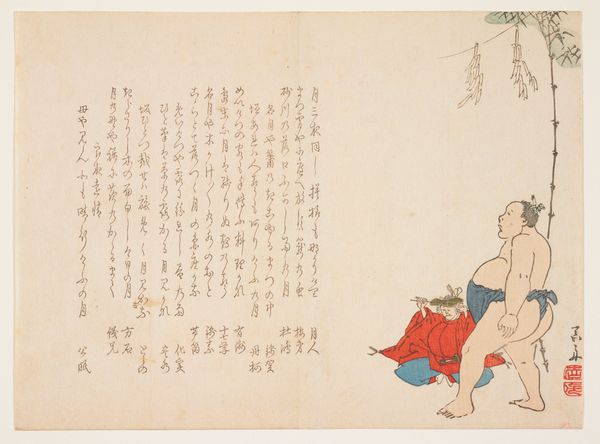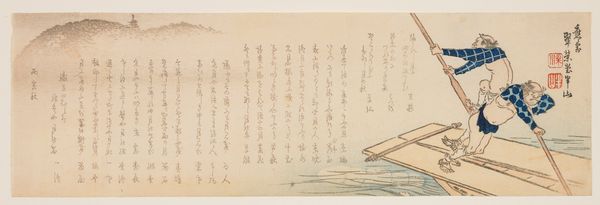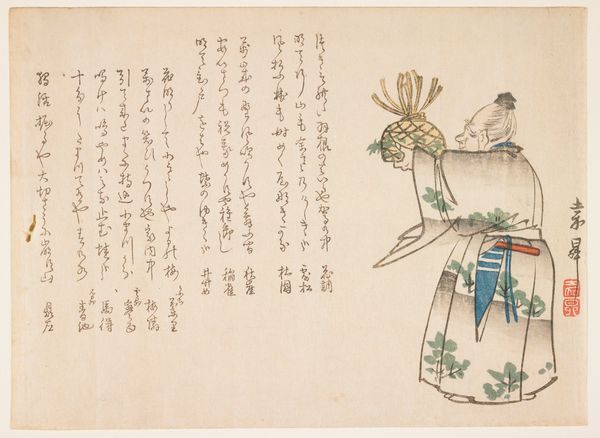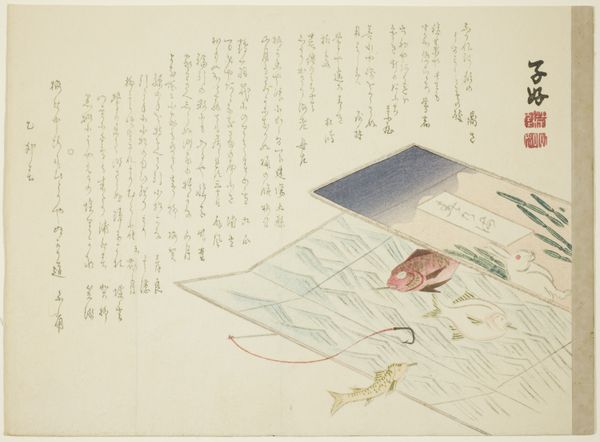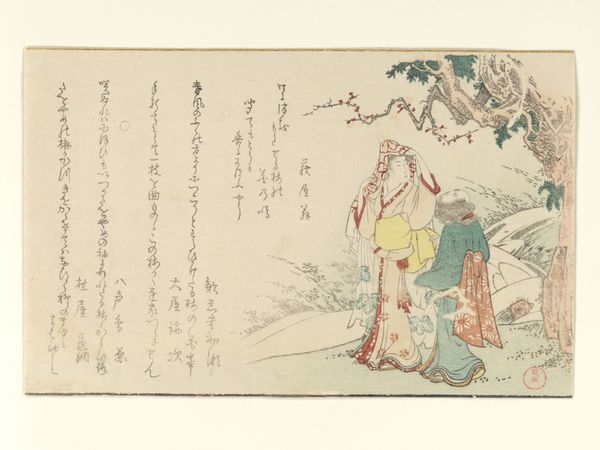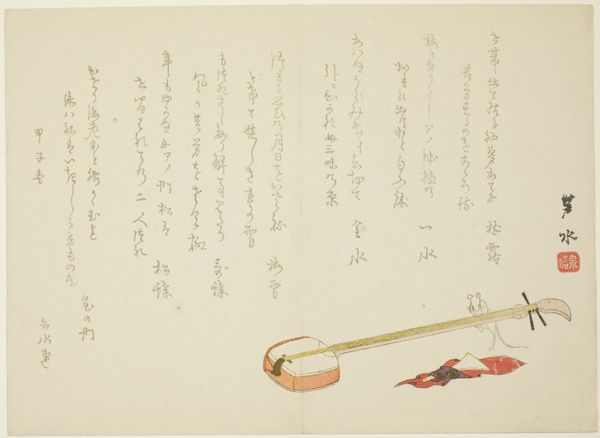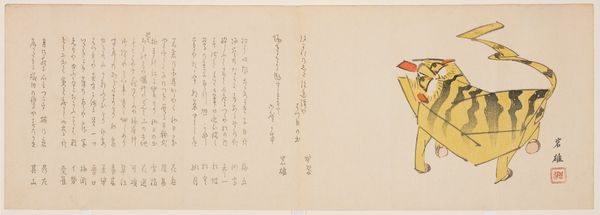
drawing, print, paper, ink
#
drawing
# print
#
asian-art
#
ukiyo-e
#
figuration
#
paper
#
ink
Dimensions: 7 1/4 x 9 3/4 in. (18.4 x 24.8 cm) (image, sheet)
Copyright: Public Domain
This is a Japanese New Year’s greeting card, or *nengajō*, by Kōbi, rendered in ink and color on paper. The arrangement presents a seemingly casual assortment of objects and text. Dominating the composition is a diagonal orientation featuring lines of calligraphy balanced by a cluster of celebratory objects: fish, a lacquered bowl, and arrows. Observe the considered contrast between the meticulous calligraphy and the more freely rendered images, a play between control and spontaneity. The overall effect challenges our expectations of spatial logic. The objects, though representational, are flattened, existing more as signs than as volumetric forms. We might consider this subversion of traditional perspective as a semiotic strategy. Each element functions as a signifier within a cultural code, inviting us to decode the underlying meanings related to New Year celebrations and symbolic gestures of renewal. Ultimately, it is in the delicate balance of form and content that the *nengajō* achieves its unique aesthetic and communicative power.
Comments
minneapolisinstituteofart almost 2 years ago
⋮
Not only do New Year's decorations in Japan add to the festivities, but also carry symbolic meaning derived from time-honored traditions. Depicted here are three kinds of New Year's decorations. The wooden plate on the right is decorated with ceremonial bows (hamayumi, in Japanese) and arrows (hamaya). Because hama, which originally referred to the target used in archery, is written with the characters "break (ha)" and "evil (ma)," these "evil breaking" bows and arrows are believed to repel bad sprits. Bamboo leaves, green pine needles and a branch of flowering plum are three plants associated with strength and fortitude. The red lacquered cup next to the plate is used to drink special sake (toso) on New Year's Day. Spiced with medicinal herbs, the sake was believed to ensure good health. Lastly, to the left are the dried sardines, a symbol of fertility, tied with colored paper cords (mizuhiki), thus wishing the families prosperity in the New Year.
Join the conversation
Join millions of artists and users on Artera today and experience the ultimate creative platform.
